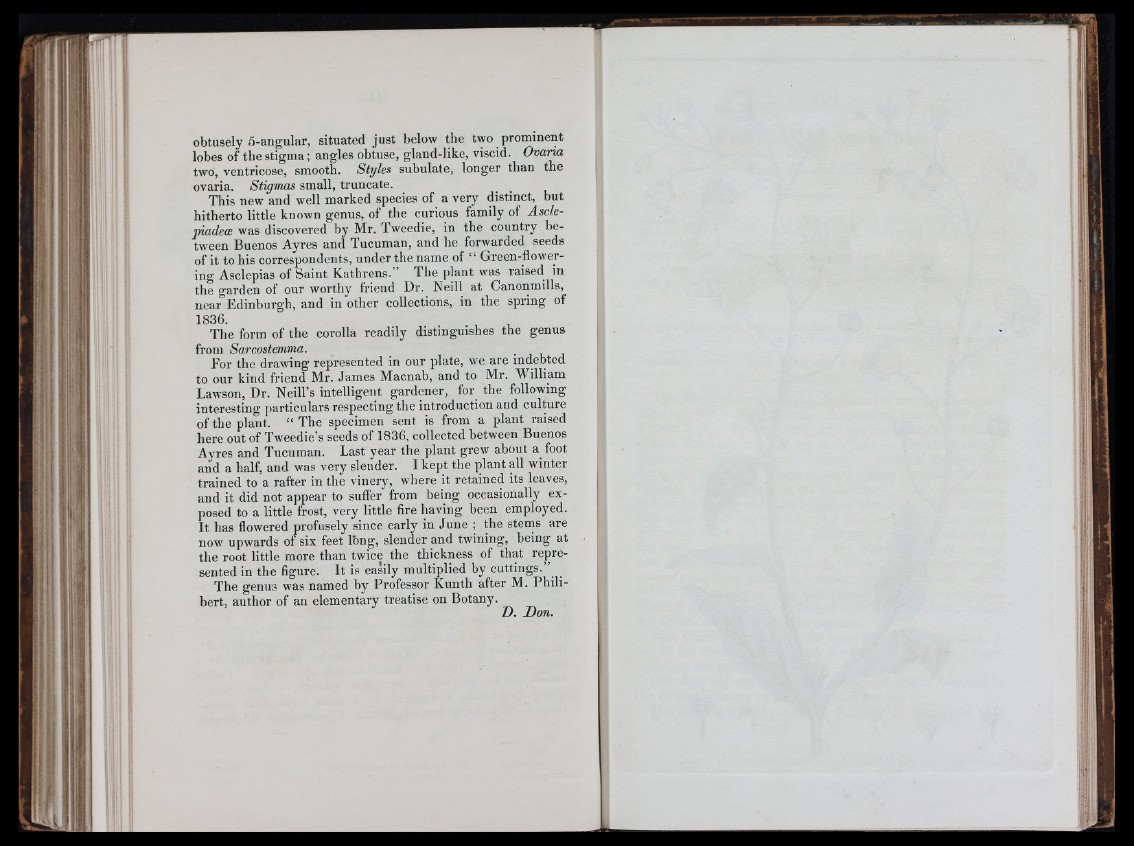
obtusely 5-angular, situated just below the two prominent
lobes of the stigma; angles obtuse, gland-like, viscid. Ovarm
two, ventricose, smooth. Styles subulate, longer than the
ovaria. Stigmas small, truncate.
This new and well marked species of a very distinct, but
hitherto little known genus, of the curious family of Ascle-
piadecB was discovered by Mr. Tweedie, in the country between
Buenos Ayres and Tucuman, and he forwarded seeds
of it to his correspondents, under the name of “ Green-flowering
Asclepias of Saint Kathrens.” The plant was raised in
the garden of our worthy friend Dr. Neill at Canonmills,
near Edinburgh, and in other collections, in the spring of
1836.
The form of the corolla readily distinguishes the genus
from Sarcostemma.
For the drawing represented in our plate, we are indebted
to our kind friend Mr. James Macnab, and to Mr. William
Lawson, Dr. Neill’s intelligent gardener, for the following
interesting particulars respecting the introduction and culture
of the plant. “ The specimen sent is from a plant raised
here out of Tweedie’s seeds of 1836, collected between Buenos
Ayres and Tucuman. Last year the plant grew about a foot
and a half, and was very slender. I kept the plant all winter
trained to a rafter in the vinery, where it retained its leaves,
and it did not appear to suffer from being occasionally exposed
to a little frost, very little fire having been employed.
It has flowered profusely since early in June ; the stems are
now upwards of six feet Ibng, slender and twining, being at
the root little more than twice the thickness of that represented
in the figure. It is easily multiplied by cuttings.”
The genus was named by Professor Kunth after M. Philibert.
author of an elementary treatise on Botany.
D. Don.